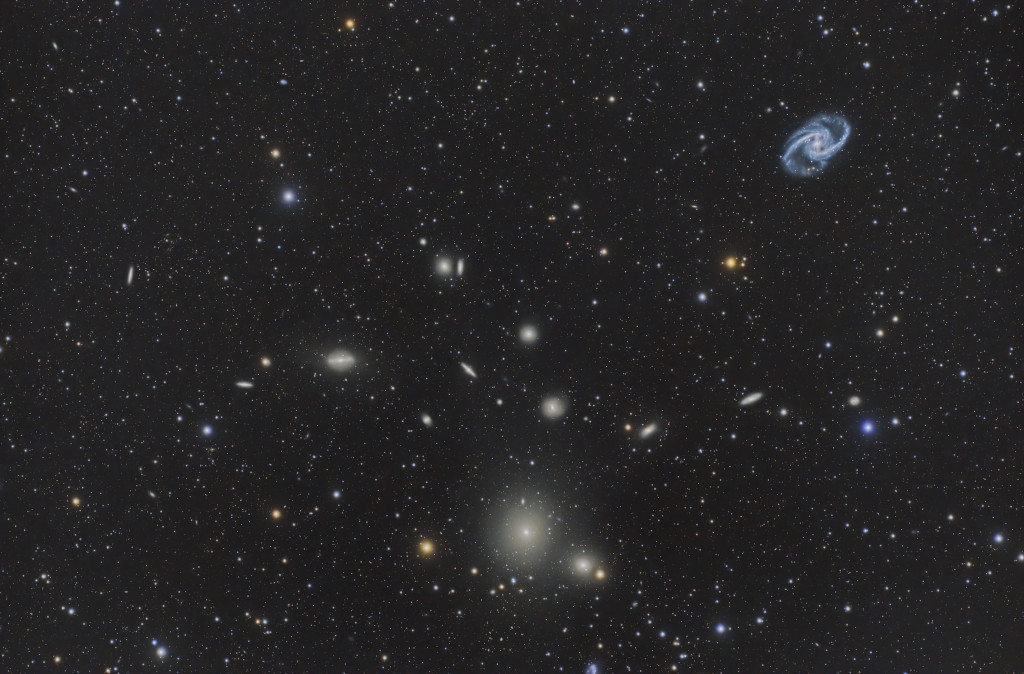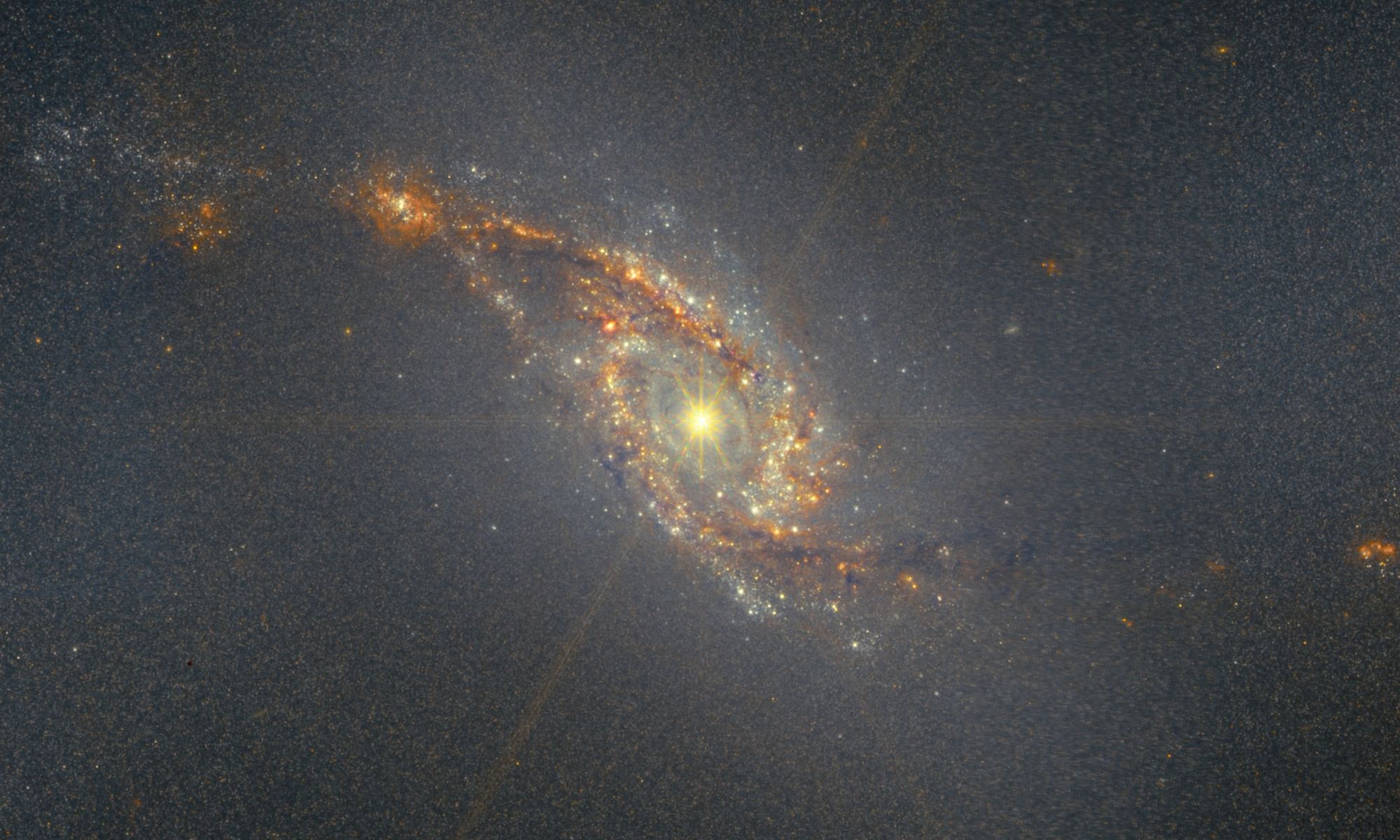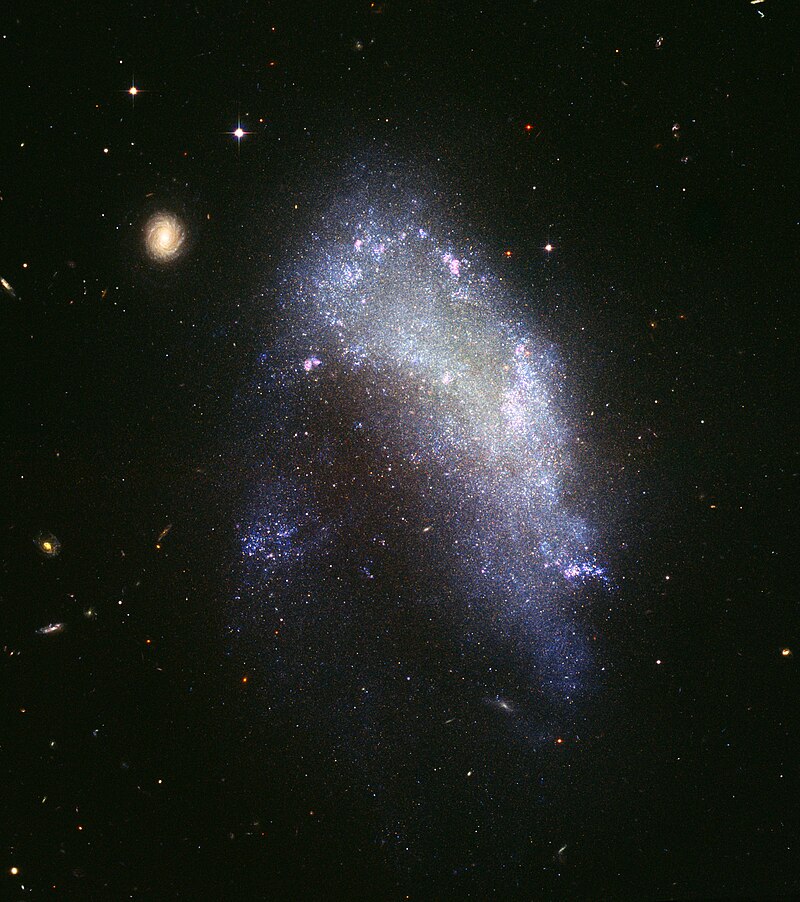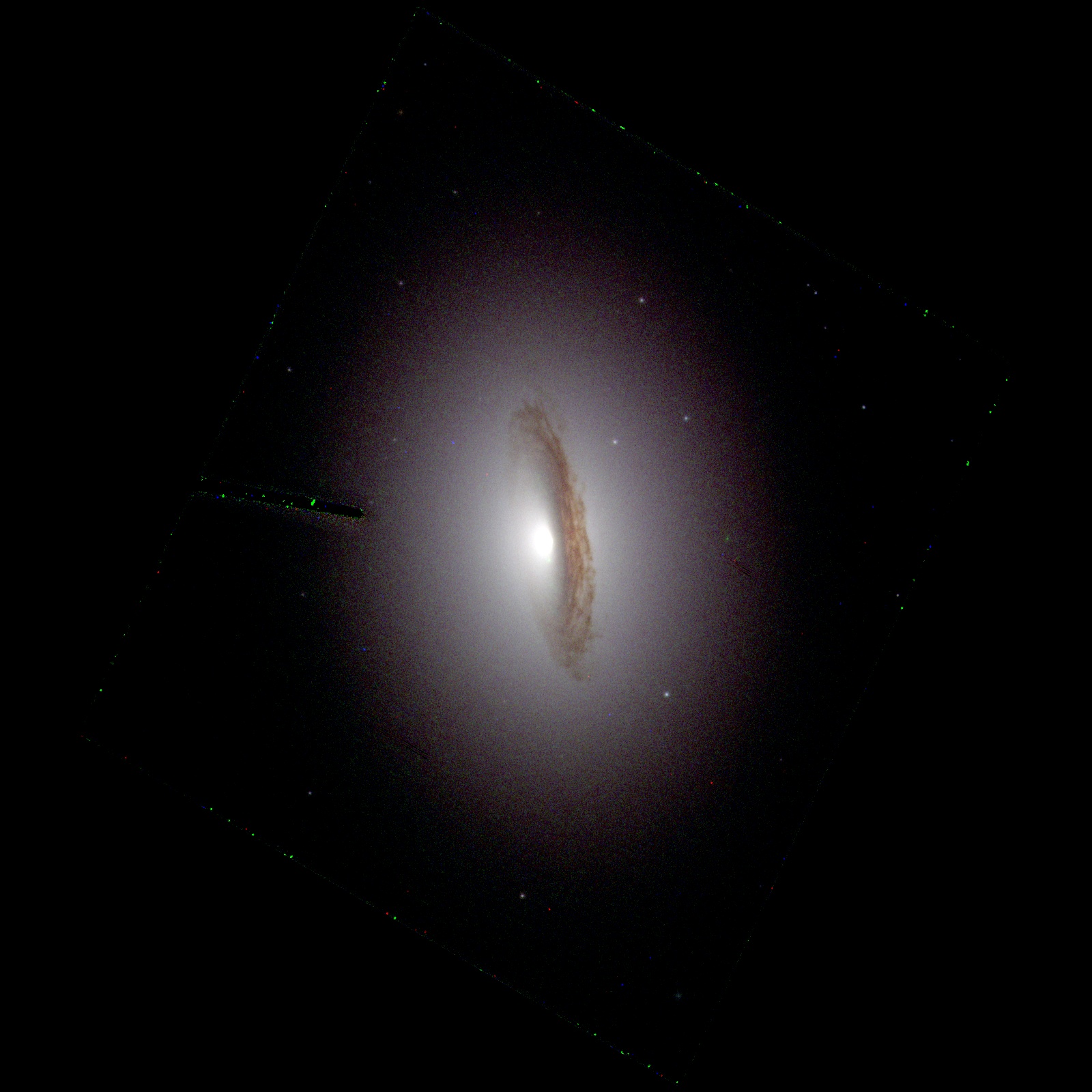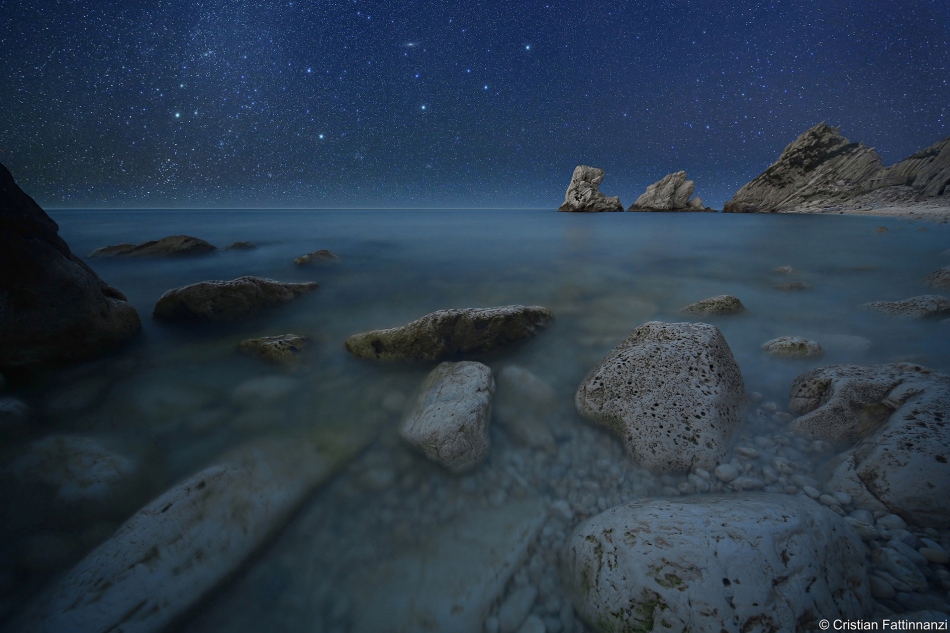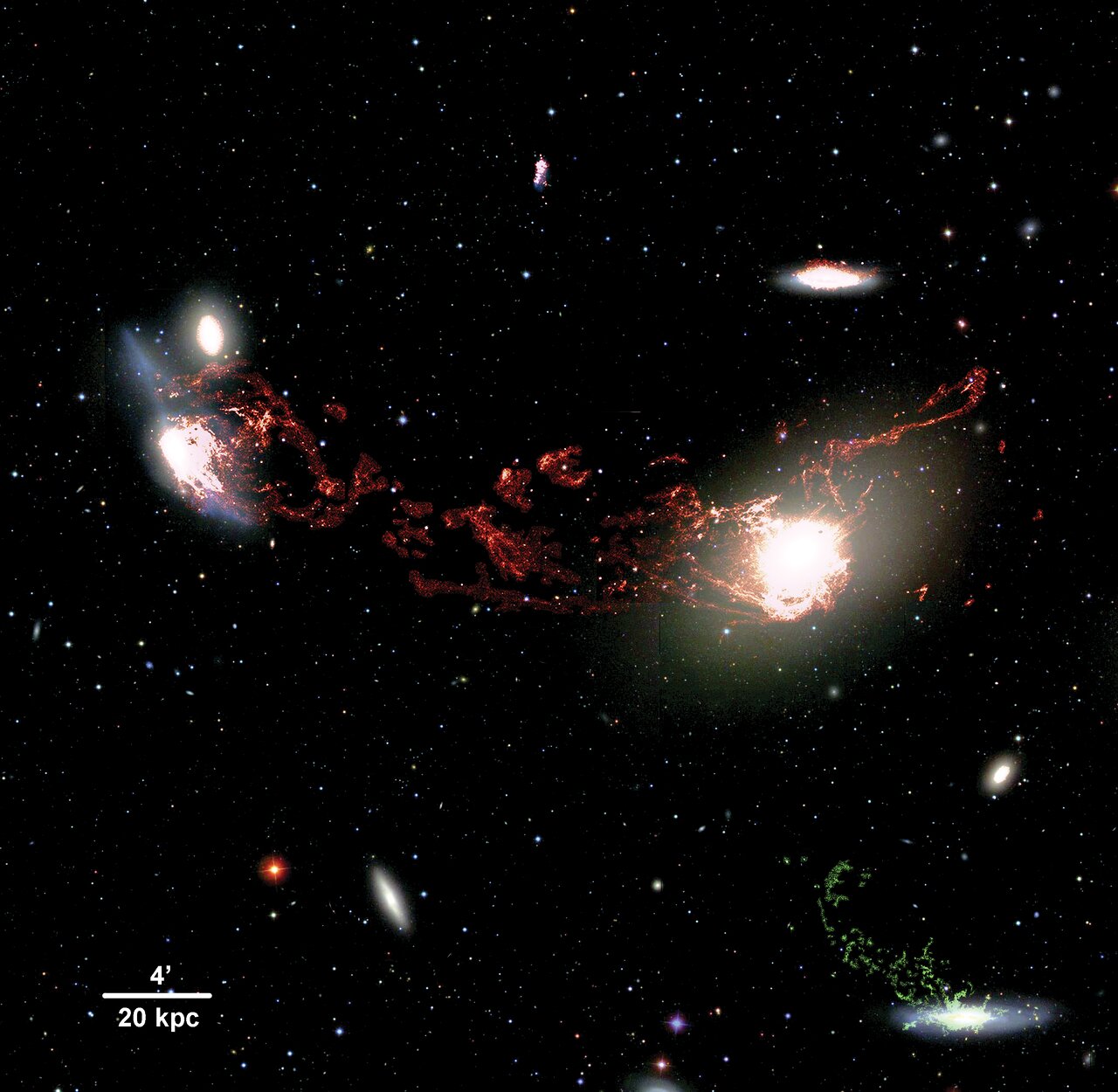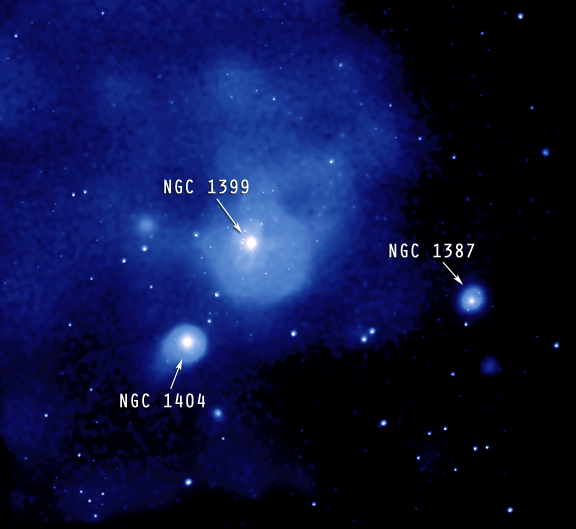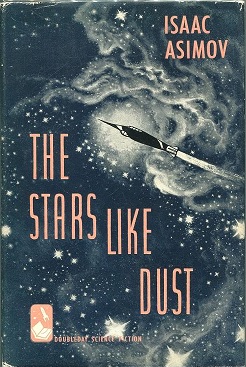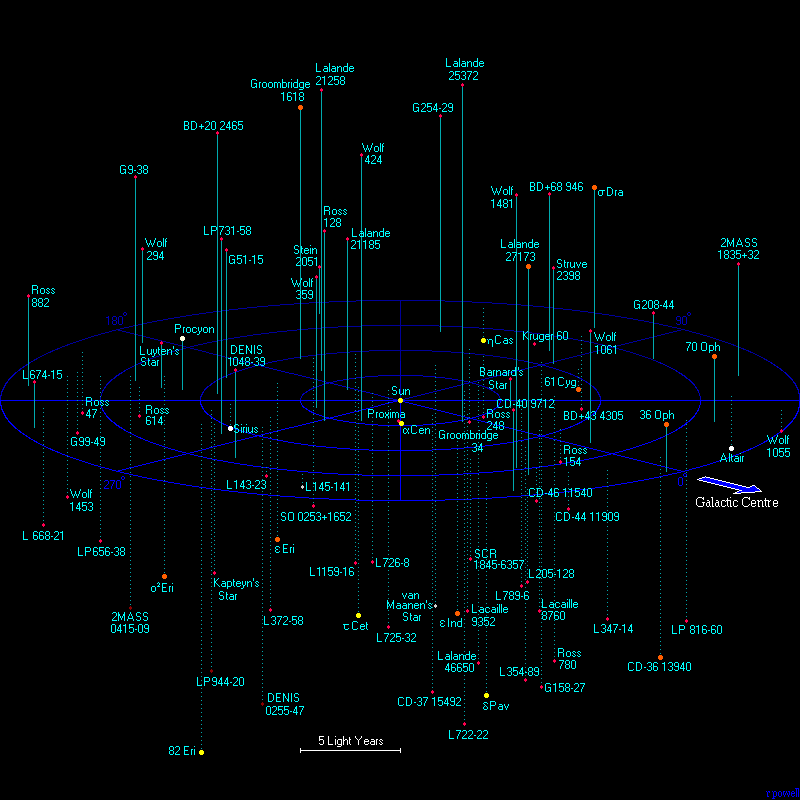It is hard not to be struck by the contrast between all the yellow blobs of elliptical galaxies in the Fornax cluster and the large, majestic, gorgeously shaped blue barred spiral galaxy of NGC 1365. This magnificent spiral looks so large compared with all the yellow blobs of the other galaxies that it is hard not to think that NGC 1365 is a foreground object. But it would really seem that it is not, because there was a
type Ia supernova in NGC 1365 in 2012, and that should be enough to pin down the distance to NGC 1365 with a reasonable amount of certainty.
And you have to watch Judy's, Geckzilla's, fantastic animation of the core of NGC 1365. Go to
this page and find a link to the animation.
NGC 1365 is a huge galaxy, with a diameter of some 300,000 light-years. That makes it three times the size of the Milky Way! And different parts of NGC 1365 orbit at different speeds in a complicated way. Read about it
here!
There are two other interesting galaxies in the Fornax Cluster, and they are NGC 1399 and NGC 1427A. NGC 1399 is the largest elliptical galaxy of the Fornax Cluster, or the cD (central dominant) galaxy of the cluster.
I recommend that you look at the 780 KB version of the picture of NGC 1399, which is
here. And if you are adventurous, I think you should look at
the 22 MB version of the picture. If you do, you will see what looks like a rich sprinkling of round white salt flakes all over the image. These are globular clusters. NHC 1399 has a huge number of globular clusters, between
5700 and 6500 of them! Bear in mind that the Milky Way is estimated to only have some 200 globulars!
Another hugely interesting galaxy of the Fornax Cluster is just barely seen in today's APOD, as a tiny arc-shaped blue little thing at the very bottom edge of the APOD, slightly to the right of center. This is NGC 1427A. You can see it a bit better here, at about 9 o'clock:
Actually, NGC 1427A is a small and gas-rich galaxy helplessly falling into the Fornax Cluster, setting up a firestorm of star formation and almost burning up in the process!
I guess that if the Earth is the Pale Blue Dot, then NGC 1427A is the Poor Blue Blob. It is a hard life out there in the large galaxy clusters!
Ann
 The Fornax Cluster of Galaxies
The Fornax Cluster of Galaxies